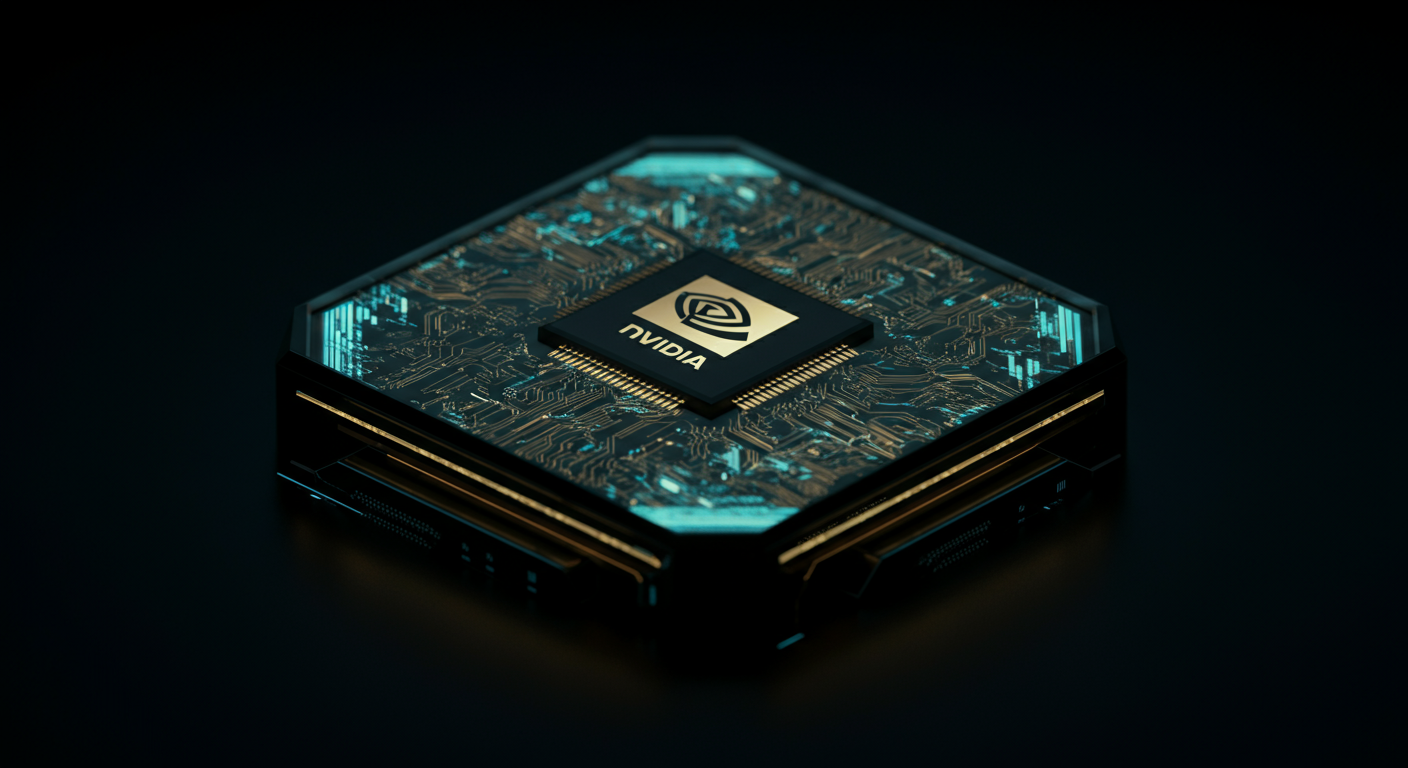Qwen3-Next-80B-A3B: Unleashing the Power of 80B Models on Commodity GPUs

Here's how Qwen is set to revolutionize the accessibility of large language models (LLMs).
Introduction: Democratizing Large Language Models
Qwen, developed by Alibaba, has quickly become a significant player in the LLM arena. These models promise sophisticated AI capabilities, but deploying such massive models has traditionally been limited by hardware constraints. The challenge? Running 80B parameter models typically requires high-end, specialized GPUs, pricing many out of the game.
The FP8 Breakthrough
The key to unlocking Qwen’s potential lies in FP8 (8-bit Floating Point) precision.
- Using FP8 reduces the memory footprint of the model dramatically.
- This efficiency allows for the run 80B LLM on consumer GPU – a game-changer.
- Think of it like fitting a grand piano into a sedan – seemingly impossible, but clever engineering finds a way!
Qwen3-Next-80B-A3B
Enter Qwen3-Next-80B-A3B, a refined model boasting both "Instruct" (tuned for instruction-following) and "Thinking" capabilities. These models are designed to be more accessible and permit broader experimentation:
"Democratizing access to cutting-edge AI means fostering innovation across a wider community."
The accessibility and affordability this offers could spur countless new applications and research avenues, truly moving AI beyond the realm of tech giants.
Large language models shouldn't require a supercomputer to run; thankfully, FP8 precision might just change the game.
Understanding FP8
Forget rocket science – think of it like this: numbers are stored using different levels of detail (precision). Traditional methods use Floating Point 32 (FP32), Floating Point 16 (FP16), or Integer 8 (INT8). However, Floating Point 8 (FP8) is the new kid on the block. FP8 uses only 8 bits to represent a number. This is half the size of FP16 and a quarter of FP32, leading to significant memory savings.
FP8 vs. The Competition: A Quick Comparison
| Precision | Memory Usage | Computation Speed | Accuracy |
|---|---|---|---|
| FP32 | High | Slow | Highest |
| FP16 | Medium | Medium | High |
| INT8 | Low | Fast | Lower |
| FP8 | Lowest | Fastest | Acceptable |
The Perks of Being FP8
- Reduced Memory Footprint: Smaller size allows for larger models or running models on less powerful hardware.
- Faster Computations: Simpler calculations translate to quicker processing.
Potential Downsides (and How Qwen Handles Them)

Of course, there are challenges. Using lower precision can lead to accuracy issues. This is where Qwen and similar models leverage advanced training methods to mitigate these risks, ensuring performance remains top-notch. Quantization-aware training simulates the effects of lower precision during training, allowing the model to adapt and maintain accuracy.
Imagine trying to draw a detailed picture with only a few crayons – it's harder, but still possible with the right techniques.
In short, FP8 enables you to fit a bigger AI brain (a larger model) into a smaller skull (a less powerful GPU). It's a crucial step toward democratizing AI, making powerful models accessible to a wider audience and opening doors for innovative applications.
Hold onto your hats, because we're diving deep into the Qwen3-Next-80B-A3B models, a game-changer in large language models.
Qwen3-Next-80B-A3B: Architecture and Capabilities
Forget needing a supercomputer; these models bring serious firepower to mere commodity GPUs. Let’s dissect the architecture of Qwen3-Next-80B-A3B architecture and its impressive capabilities.
- 80B/3B-Active Hybrid-MoE (Mixture of Experts): This is where the magic happens. Imagine a team of specialists (experts) working together. The 80B parameter model has a vast knowledge base, while the 3B-active part efficiently handles each specific task. This efficient design enables Qwen3 to run on more accessible hardware, making it more cost-effective than traditional monolithic models of similar size.
'Instruct' and 'Thinking' Models
Qwen3-Next-80B-A3B doesn’t just come in one flavor; it offers specialized variants:
- 'Instruct' variant: Optimized for following instructions precisely. Think of it as your incredibly diligent and detail-oriented assistant.
- 'Thinking' variant: Designed for complex reasoning and creative tasks. This model shines in generating novel ideas and tackling multifaceted problems. You might leverage this when using ChatGPT, an extremely versatile chatbot from OpenAI.
Training Methodology
These models are fueled by a massive dataset and a meticulous training process:
- Extensive Training Data: Trained on a diverse range of text and code, ensuring broad knowledge and versatility.
- Rigorous Methodology: Fine-tuned for optimal performance across various tasks.
Task Performance

So, where does Qwen3-Next-80B-A3B truly excel?
- Complex Reasoning: Tackling problems that require multi-step thinking.
- Creative Writing: Crafting engaging stories, poems, and scripts.
- Code Generation: Assisting software developers with code creation and debugging. For more AI tools that can help with coding, check out Software Developer Tools.
Large language models are often seen as GPU-guzzling beasts, but Qwen3-Next-80B-A3B proves that even an 80B parameter model can be tamed for use on readily available hardware.
Minimum GPU Requirements
Forget needing a server farm; with FP8 precision, Qwen3-Next-80B-A3B can run on GPUs with around 80GB of VRAM. This brings it into the realm of prosumer cards like the RTX 3090 or the newer RTX 4090, although performance will vary. Understanding the GPU memory requirements for 80B model is the first step.
Optimization Strategies for Commodity GPUs
Getting the model running is one thing; optimizing for speed is another. Here are some tricks:
- Quantization: FP8 is already a big step, but further quantization to INT4 or even binary can yield significant speedups, albeit with potential accuracy trade-offs.
- Pruning: Removing less important connections in the neural network reduces the model's size and computational load.
- Distillation: Training a smaller, faster "student" model to mimic the behavior of the larger "teacher" model (Qwen3-Next-80B-A3B).
Software Libraries and Frameworks
Leverage the power of existing AI tools:
- PyTorch: A popular framework that provides tools for building and training neural networks.
- TensorFlow: Another powerful open-source library with a wide range of functionalities for machine learning.
- FasterTransformer: NVIDIA's library optimized for transformer-based neural networks. It is designed for efficient inference on NVIDIA GPUs.
Bottleneck Busting
Memory bandwidth and compute limitations are the usual suspects.
"Optimizing Large Language Models on consumer-grade GPUs is akin to fitting an elephant into a Mini Cooper - requires some clever engineering."
Techniques like tensor parallelism (splitting the model across multiple GPUs) and clever memory management are crucial. If you're delving into code, consider looking at Software Developer Tools available to improve the coding workflow.
In short, running massive models on consumer GPUs is no longer a pipe dream; it's about clever optimization and selecting the right tools for the job. With a bit of ingenuity, you can unlock impressive AI capabilities without breaking the bank.
Alright, let's see what Qwen can do for us in the real world.
Practical Applications and Use Cases
Large language models aren't just clever parlor tricks; they're tools ready to reshape industries. The key advantage of models like Qwen3-Next-80B-A3B, is that they can run on readily available GPUs, expanding accessibility. Let’s look at some Qwen LLM use cases.
Content is Still King (and Qwen Can Write It)
Forget writer's block! Qwen can assist with all aspects of content creation and copywriting, from generating blog posts and articles to crafting compelling marketing copy. Tools like Jasper show how AI copywriting can dramatically accelerate content workflows.
Service With a (Digital) Smile
Customer service is ripe for AI disruption.
- Chatbot Development: Qwen can power sophisticated chatbots that understand and respond to customer queries in a natural, human-like way.
- Efficiency Boost: This frees up human agents to handle more complex issues.
- Tool Example: LimeChat provides AI-driven customer support and automation
Code and Conquer
Software engineers, rejoice!
- Code Generation: Qwen can generate code snippets, complete functions, and even entire programs based on natural language descriptions.
- Time Savings: Imagine describing the functionality you need and having the code practically write itself.
- Tool Example: GitHub Copilot assists with code completion and generation
Data, Data, Everywhere
Scientists and researchers can leverage Qwen for:
- Data Analysis: Extracting insights and identifying patterns from large datasets
- Hypothesis Generation: AI can even suggest new avenues for research
- Tool Example: Browse AI helps extract and monitor data from any website.
Personalized Learning
Imagine a tutor perfectly tailored to each student.
- Personalized Tutoring: Qwen can adapt its teaching style and content to individual learning needs.
- Adaptive Learning: Provide custom explanations and exercises based on each user's progress.
- Tool Example: Khanmigo is an AI-powered tutor built to provide personalized education.
The Future is Here(ish)
The applications of Qwen are vast, and its ability to operate on commodity GPUs opens doors for wider adoption across diverse fields.
While true "artificial general intelligence" remains a topic for philosophers, tools like Qwen are proving AI's real-world value across industries.
Unleash the potential of 80B models without breaking the bank – let's get you started with Qwen3-Next-80B-A3B.
Getting Started: A Step-by-Step Guide
Ready to dive in? This Qwen LLM tutorial walks you through the process of downloading and running Qwen3-Next-80B-A3B models, even on commodity GPUs.
Downloading the Model
First, head over to the official model repository (usually found on platforms like Hugging Face) to download the necessary model files.
- Important: These models are large, so ensure you have sufficient disk space and a stable internet connection.
- Consider using tools like
git lfsfor efficient handling of large files.
Setting Up Your Environment
Now, let's prepare your environment. Python is your friend here!
- Install Python (3.8+)
- Create a virtual environment:
python -m venv qwen_env - Activate it:
- Windows:
.\qwen_env\Scripts\activate - macOS/Linux:
source qwen_env/bin/activate
Installing Dependencies
Next, install the required Python packages. This might include libraries like transformers, torch, and other dependencies specific to the Qwen implementation.
python
pip install transformers torch accelerate
- Note: Check the model's documentation for a comprehensive list.
Running the Model
With the environment set, you're ready to run the model, even with Run Qwen model on Google Colab!
python
from transformers import AutoModelForCausalLM, AutoTokenizertokenizer = AutoTokenizer.from_pretrained("Qwen/Qwen3-Next-80B-A3B", trust_remote_code=True)
model = AutoModelForCausalLM.from_pretrained("Qwen/Qwen3-Next-80B-A3B", device_map="auto", trust_remote_code=True)
prompt = "The quick brown fox jumps over the lazy dog."
inputs = tokenizer(prompt, return_tensors="pt").to("cuda")
outputs = model.generate(inputs, max_new_tokens=50)
print(tokenizer.decode(outputs[0], skip_special_tokens=True))
This snippet demonstrates a basic inference. Adjust parameters like
max_new_tokensto control the output length.
Troubleshooting
- Out of Memory Errors: Reduce batch size, enable gradient accumulation, or use a smaller model variant.
- Incorrect Output: Double-check the input format and ensure the prompt is well-formed.
Resources
Refer to the official Qwen3-Next-80B-A3B documentation and community forums for more detailed information and troubleshooting tips. You might also want to explore the Prompt Library for effective prompting strategies.By following these steps, you'll be well on your way to harnessing the power of these impressive models – happy experimenting!
It was only a matter of time before large language models broke free from the shackles of expensive, specialized hardware.
Democratizing AI Power
Qwen3-Next-80B-A3B's efficient design is a game-changer, and it offers high performance while running on commodity GPUs, like those found in your average workstation. This is no small feat. Traditionally, models of this scale demanded specialized, power-hungry infrastructure. With developments such as these, more professionals can access the potential for complex AI projects using Design AI Tools or Software Developer Tools on existing systems.FP8 and the Future
The use of FP8 (8-bit Floating Point) and similar techniques for reducing memory footprint and computational cost is key to democratizing access to powerful LLMs.Imagine needing a supercomputer to run a sophisticated calculator, and instead you can use your phone.
This will spur innovation because:
- Lower barriers to entry mean more people can experiment.
- Faster iteration cycles lead to quicker breakthroughs.
- A wider range of perspectives will drive AI forward in unexpected ways.
Ethics and Optimization
Of course, readily available AI power also presents ethical considerations. Easy access requires responsible development and deployment. Techniques such as Prompt Engineering may be more necessary than ever. Further optimization will likely push LLM capabilities even further, creating applications we can barely imagine today. It all builds towards a future of large language models that are both powerful and accessible.
Keywords
Qwen3-Next-80B-A3B, FP8 precision, Large Language Models (LLMs), Commodity GPUs, Hybrid-MoE, Inference optimization, AI accessibility, 80B model, Mixture of Experts, GPU memory, AI democratization, Qwen model tutorial, Run LLM locally, Qwen use cases, FP8 vs FP16
Hashtags
#AI #LLM #MachineLearning #DeepLearning #Qwen
Recommended AI tools
ChatGPT
Conversational AI
AI research, productivity, and conversation—smarter thinking, deeper insights.
Sora
Video Generation
Create stunning, realistic videos and audio from text, images, or video—remix and collaborate with Sora, OpenAI’s advanced generative video app.
Google Gemini
Conversational AI
Your everyday Google AI assistant for creativity, research, and productivity
Perplexity
Search & Discovery
Clear answers from reliable sources, powered by AI.
DeepSeek
Conversational AI
Efficient open-weight AI models for advanced reasoning and research
Freepik AI Image Generator
Image Generation
Generate on-brand AI images from text, sketches, or photos—fast, realistic, and ready for commercial use.
About the Author

Written by
Dr. William Bobos
Dr. William Bobos (known as 'Dr. Bob') is a long-time AI expert focused on practical evaluations of AI tools and frameworks. He frequently tests new releases, reads academic papers, and tracks industry news to translate breakthroughs into real-world use. At Best AI Tools, he curates clear, actionable insights for builders, researchers, and decision-makers.
More from Dr.

